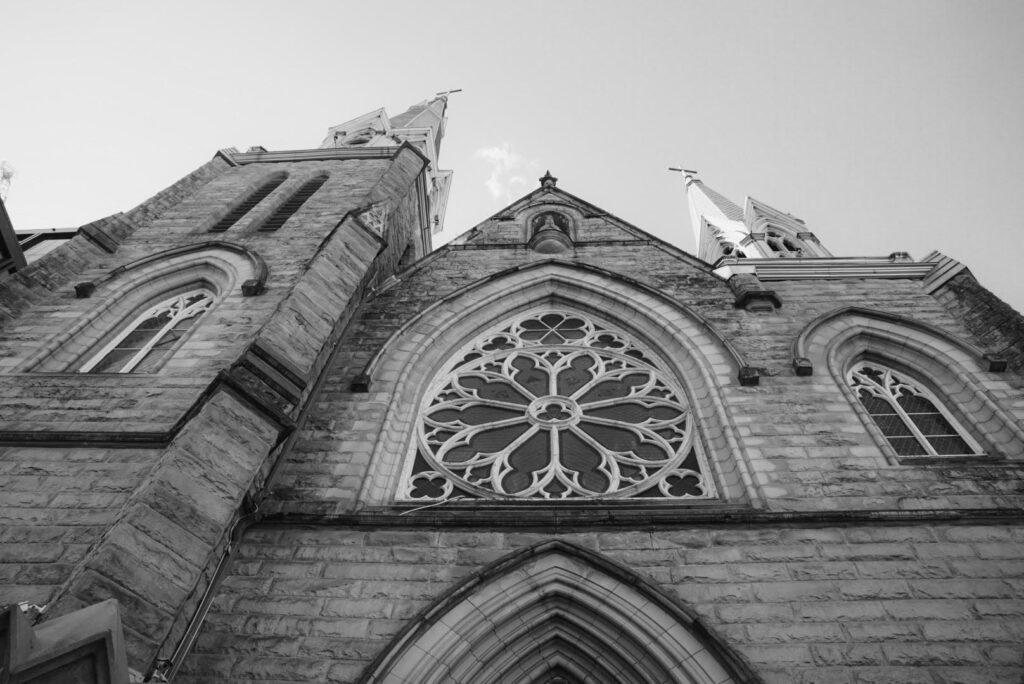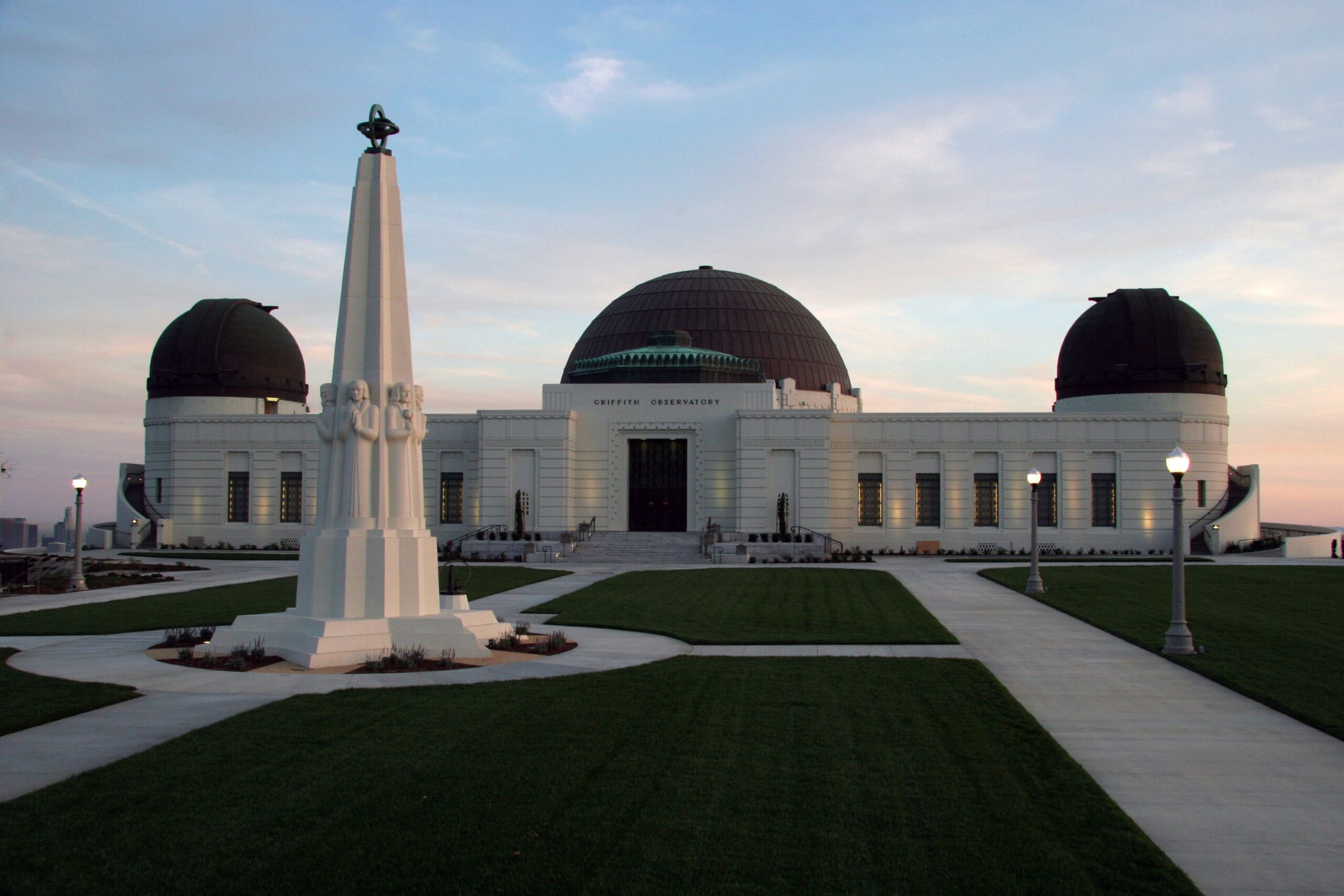The Cathedral of Our Lady of the Holy Rosary in Vancouver. [Credit: Robyn Huang]
(BRITISH COLUMBIA) — The Cathedral of Our Lady of the Holy Rosary usually sees many churchgoers for daily mass, even on weekdays. Sometimes, the Vancouver church is filled to the brim, with every last inch of bench space taken. But now, during the pandemic, there are measures in place to ensure safe social interactions. Regular patrons can still attend public mass, but live-streaming sessions are also available online on the church’s website as an alternative.
Attendees queue up to an hour before mass starts in a long spaced-out line snaking around the building’s outer edge. The facility’s capacity is limited to 50 people, and when that number is reached, subsequent arrivals are turned away. Two employees wearing protective face shields resembling welder helmets manage clipboards on either side of the front door. They ask for names and contact information like phone numbers and e-mail addresses. They also remind visitors constantly to “follow the markers” and to keep their distance.
All along the entrance and plastered throughout the building are signs asking visitors to follow necessary preventative measures. There is also information on how the facility itself and shared resources like Bibles are cleaned. In regular times, patrons would be able to dip their hands into a small fountain of holy water to bless themselves before prayer. These fountains are now drained. Surrounding them, as a replacement, are canisters of hand sanitizer. Areas where visitors usually light votive candles are now blocked off with tape.
Walking through, the church feels like a guided maze. There are brightly green floor markers everywhere to ensure proper flow in and out of the aisles. The benches themselves are also marked to ensure physical distancing. The first two rows closest to the altar are blocked off, along with every other row. This gothic cathedral is expansive, but safeguards make the building feel even more massive. Typically, patrons would greet each other during mass with a few words or a handshake. This greeting is replaced now with simple head nods from behind face masks. The room feels somber.
Choirs and musicians usually support the mass. They are noticeably absent today, with a recording of hymns playing instead. The congregation alters the ceremony. For instance, they no longer share a cup of wine. Prayers replace communion. Donation baskets are substituted with boxes along the side of the aisles. The priest’s voice echoes throughout the hall; he and other readers have to enunciate more because there are no microphones.
The changes add subdued energy to the room. Today’s assembly is visibly not a regular mass. There is still a long way back to normal. In this city, people have the privilege to seek solace in the church. During tough times, comfort in any capacity matters.


